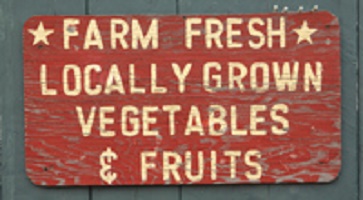$tretch Your Organic $pending Power:
21 Tips for Buying Low- or No-Pesticide Fruits and Veggies
 Not everybody can afford to buy completely organic food all of the time. And in some areas, the available selection of organic food is less than complete (and that’s not to mention the complication factor of the pollution generated by transporting organic food over long distances). Not everybody can afford to buy completely organic food all of the time. And in some areas, the available selection of organic food is less than complete (and that’s not to mention the complication factor of the pollution generated by transporting organic food over long distances).
One solution to the problem is to focus on choosing organic when you are purchasing those foods that carry the heaviest burden of pesticides, chemicals, additives and hormones when grown conventionally. With the help of several organizations that have conducted extensive research into the topic, we’ve compiled two lists that will help stretch your organic spending power and reduce your family’s exposure to harmful chemicals. We recommend that you choose locally grown, in-season food, which, of course, varies depending on where you live.
7 Fruits and Vegetables to Buy Organic
These fruits and vegetables are most commonly heavily sprayed with pesticides, so it is recommended that you buy organic or avoid them altogether if you can’t find organic:
- Peaches – Multiple pesticides are regularly applied to these delicately skinned fruits in conventional orchards, putting them at the top of the high pesticide list. Can’t find organic? Some safer alternatives with similar nutrients are water- melon, tangerines, oranges and grapefruit.
- Apples – Scrubbing and peeling doesn’t eliminate chemical residue completely. Anyway, peeling a fruit or vegetable also strips away many nutrients. Substitute watermelon or tangerines for similar nutritional value.
- Sweet Bell Peppers – Peppers’ thin skins don’t offer much of a barrier to pesticides, which are often heavily sprayed onto this insect-prone crop. Instead, eat green peas, broccoli, asparagus and cabbage.
- Celery – Celery’s lack of protective skin means it’s almost impossible to wash off the chemicals that are used on conventional crops. Less-sprayed substitutes include broccoli, radishes and onions.
- Strawberries – If you buy strawberries out of season, they’re most likely imported from countries that have less-stringent regulations for pesticide use. Alternatives could be blueberries, kiwi and pineapples.
- Lettuce and Spinach – Salad greens are frequently contaminated with the most potent pesticides used on food. So if you can’t find organic salad fixings (or don’t want to buy imported organic), eat cabbage, cauliflower and Brussels sprouts instead.
- Carrots – Carrots host many insects and are highly sprayed with pesticides, some of which are systemic and can’t be removed by peeling. Substitute sweet potato or broccoli.
- Potatoes – Potatoes rank high for pesticide residue as well as fungicides added to the soil. Conventionally grown eggplant and cabbage are sprayed less.
14 Fruits and Vegetables That Carry a Lower Pesticide Load
Lower pesticide levels are generally present in the following conventionally grown foods, so if you if you can’t afford to buy 100 percent organic, here is a good place to save:
- Asparagus
- Avocados
- Broccoli
- Cabbage
- Cauliflower
- Corn
- Eggplant
- Kiwi
- Onions
- Oranges/Tangerines
- Pineapple
- Sweet Peas
- Sweet Potatoes
- Watermelon
Learn More
The non-profit Environmental Working Group produces a Shopper’s Guide to Pesticides in Produce.
The non-profit Organic Center offers a free download of a wallet-sized four-fold guide called Organic Essentials. It presents pesticide risk rankings for several key fruits and vegetables.
To Buy or Not to Buy Organic: What You Need to Know to Choose the Healthiest, Safest, Most Earth-Friendly Food by Cindy Burke (Da Capo Press, 2007
The Organic Food Shopper’s Guide by Jeff Cox (Wiley, 2008)
A Field Guide to Buying Organic by Luddene Perry and Dan Schultz (Bantam, 2005)
|

